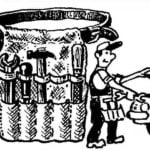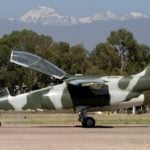 Yak-9 became the subsequent development of long-range fighter Yak-7ДИ, appeared in October 1942 and the Yak-7ДИ made two wing tank, reducing fuel capacity up to 320 kg. there were some other seemingly minor, but important differences in a battle. This version was tested successfully and were built in three factories under the designation Yak-9. Armament usually consisted of 20-mm cannon ShVAK and the UBS 12.7 mm machine gun.
Yak-9 became the subsequent development of long-range fighter Yak-7ДИ, appeared in October 1942 and the Yak-7ДИ made two wing tank, reducing fuel capacity up to 320 kg. there were some other seemingly minor, but important differences in a battle. This version was tested successfully and were built in three factories under the designation Yak-9. Armament usually consisted of 20-mm cannon ShVAK and the UBS 12.7 mm machine gun.
The Yak-9, received its baptism of fire at Stalingrad, fared well in battle. On its base was created a whole family of combat and training machines. In particular, anti-Yak-9T fighter escort Yak-9D and Yak-9ДД, fighter-bomber Yak-9B. In 1943, it was an attempt to create a high-altitude interceptor, the Yak-9ПД, but the engine wasn’t ready.
The first attempt to improve the flight performance of the Yak-9 was associated with the setting motor M-106-1 SK with a capacity of 1350 HP at an altitude of 2400 m. However, the industry was unable to bring the engine up to the desired condition. To solve this problem was only at the end of the war, after finishing VK-107A engine. In this form (variants of the Yak-9U and Yak-9P) aircraft participated in the war in Korea. From 1942 to 1948 the industry was released 16 749 copies of the Yak-9 all modifications.
Basic data of the Yak-9U No. 41-038 (1945)
Engine VK-107A 1650 HP power takeoff Wingspan — 9,74 m Length — 8.55 m. wing Area — 17,15 m2. Takeoff weight of 3145 lbs. empty Weight — 2498 kg, fuel capacity — 351 kg. Maximum speed is 676 km/h at an altitude of 5,900 m Ceiling 10 850 m. the Distance is 1060 km and Armed with three 20-mm cannon B-20.



